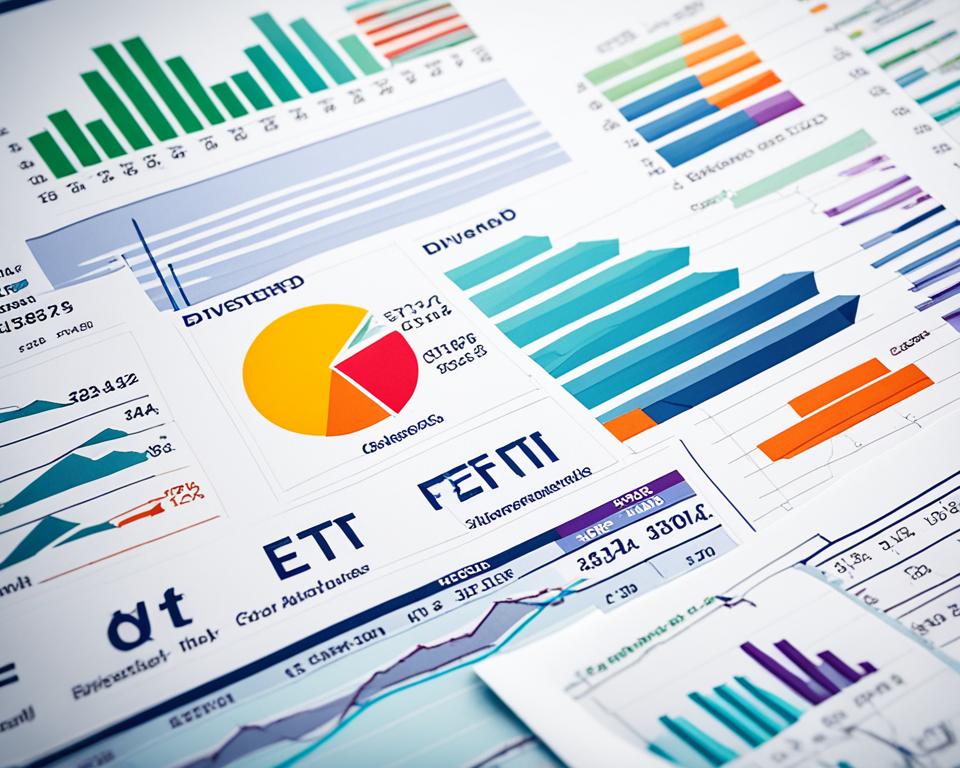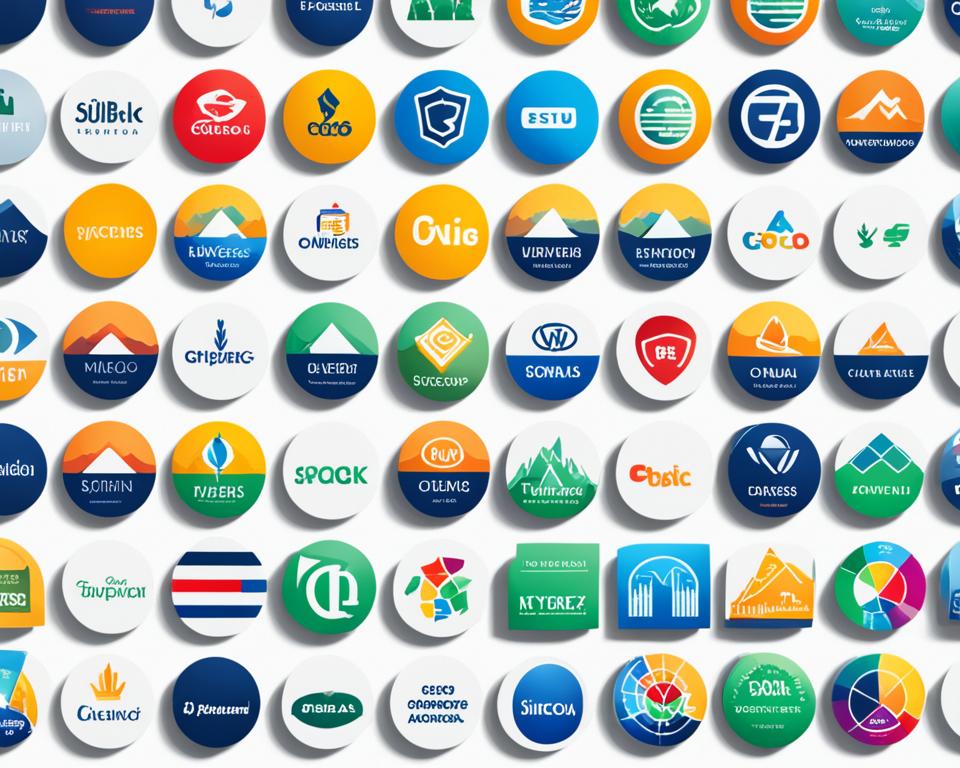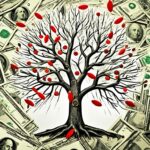As an income investor, have you ever stumbled upon the term “negative dividend investing” and wondered can dividends be negative? The concept might sound unusual, but the financial world is replete with complexities that can often lead to unexpected scenarios such as this. When it comes to shareholder payouts, most would assume a positive return on their investment. However, certain conditions can cause dividends to take on what appears to be a ‘negative’ character, especially when assessing the dividend’s sustainability through payout ratios.
Let’s dig into the nuts and bolts of dividends. A high dividend yield tends to catch the eye of investors seeking regular income. Yet, such allure must be scrutinized. A yield that seems too good to be true might be a red flag, warning of potential financial duress. It’s crucial for you, as a savvy investor, to peer beneath the surface and understand the health and implications behind those numbers. After all, an informed decision could mean the difference between sustainable income and unexpected capital loss.
Key Takeaways
- Understanding the possibility of negative dividends is key for income-focused investors.
- Sustainability of dividends is a major factor to consider, in which payout ratios play a vital role.
- Payout ratios exceeding 100% or turning negative may indicate financial instability.
- Negative dividend scenarios may arise in industries such as oil and gas during market downturns.
- Investment decisions should be made cautiously when high dividend yields seem to defy typical market conditions.
Exploring the Concept of Dividends and Company Profitability
When delving into the realm of stock market investments, dividends are a cornerstone concept that underline the health and success of any publicly traded company. These payouts reflect a share of profits that you, as a shareholder, receive—symptomatic of the company’s overall profitability. However, the dynamics between dividends and company earnings are not always straightforward, especially when confronted with terms like dividend negative value and negative dividends.
What is a Dividend?
A dividend is essentially a portion of a company’s earnings returned to shareholders as a reward for their investment. This financial reward is traditionally paid out on a quarterly basis and varies in amount depending on the company’s profitability and established dividend policy. Dividends represent your share of the company’s success, signifying a direct connection between the company’s performance and your personal gain as an investor.
The Relationship Between Dividends and Earnings
Linking dividends to company earnings, the dividend payout ratio surfaces as a critical metric for investors. Measured as a percentage, this ratio compares the total dividends paid out to shareholders relative to the company’s net income. Considered a bellwether for company stability, a balanced payout ratio suggests good management and lays the foundation for future growth.
Yet, in certain environments, companies may project negative dividends, creating a unique paradox. Negative earnings—losses, rather than profits—lead to a scenario where the payout ratio may read as a negative figure. What does this signal to someone with skin in the game? Understanding the implications of such a contra-normative result is essential in making informed investment decisions and gauging the underlying company profitability.
| Year | Company Net Income | Total Dividends Paid | Dividend Payout Ratio |
|---|---|---|---|
| 2020 | $5M | $2M | 40% |
| 2021 | $4M | $2M | 50% |
| 2022 | (-$1M) | $2M | Negative |
As observed in the above example, a switch to negative net income drastically alters the payout ratio, taking it into the realm of negative dividends—a scenario that could very well raise eyebrows and have investors bracing for potential dividend cuts. It’s in these turbulent financial waters that your acumen as an investor is truly tested.
To navigate such complexities, join us as we continue to dissect dividend intricacies and arm you with the knowledge to make investment choices with confidence.
Can Dividends Be Negative?
When evaluating investment opportunities in the stock market, you typically anticipate a return on your investment through dividends; however, the financial health of a company and market volatility can result in a scenario where you’re confronted with the concept of a negative dividend payout. But can dividends truly be negative? It’s a situation that, while rare, can occur under certain financial conditions.
Entering the realm of negative dividend stocks, this phenomenon typically involves forward-looking earnings projections indicating losses, which in turn lead to negative payout ratios when dividends are still being paid. To fund these dividends, a company might resort to cash reserves, issuing debt, or asset sales—a tactic that could sustain dividends in the short term, but which may also signal long-term financial instability.
The Reality of Negative Dividend Payouts
The essence of dividends is to distribute a company’s profits to its shareholders; therefore, when you hear about a negative dividend yield, it can be perplexing. This occurs when companies anticipate negative earnings but choose to maintain dividend payouts, resulting in ratios that dip below zero. This not only impacts current financials but also raises the risk profile of your investment.
Case Studies: Negative Payout Ratios in Various Industries
Let’s examine actual instances where industry giants faced situations leading to negative dividend yields. Consider the energy sector, where companies are particularly susceptible to market swings. The decline in oil prices has historically plunged many such firms into distress, compelling them to keep up dividends against the tide of red ink in their ledgers.
| Company Name | Expected EPS | Annual Dividend | Negative Payout Ratio |
|---|---|---|---|
| Apache Corp. (APA) | -$1.61 | $1.00 | -62% |
| EOG Resources (EOG) | -$0.95 | $0.67 | -70% |
| Anadarko Petroleum | -$2.95 | $0.20 | -6.80% |
The above cases illustrate how plunging earnings per share (EPS) resulted in negative payout ratios. These are clear examples that illustrate the risk associated with investing in stocks exhibiting negative payout ratios, as they may be precursors to dividend cuts or a reevaluation of the company’s financial strategies.
While these are sector-specific examples, the implications are far-reaching. Your investing strategy should thus involve a prudent analysis of dividend sustainability to ensure a balanced and risk-aware portfolio. In the next sections, we’ll dive deeper into the factors affecting dividend sustainability and how to better prepare for and understand the financial signals of your investments.
Assessing the Sustainability of Dividends
Investors focusing on dividend income consistently seek assurance that their passive earnings are not just a present luxury but a lasting reward. However, the assurance of dividend sustainability is complex, requiring a keen eye on more than just historical earnings. Not only do investors need to consider the capacity of a business to perpetuate profitable operations, but also its ability to triumph over lean periods without sacrificing dividend payouts.
To truly gauge the resilience of dividend income, an in-depth analysis of a company’s financial outlook is essential, especially when navigating precarious signs like a negative dividend income.
The Role of the Payout Ratio in Dividend Sustainability
At the forefront of evaluating a dividend’s durability is the payout ratio. This financial barometer measures the proportion of earnings a company distributes to its shareholders in the form of dividends. A healthy payout ratio is seen as a hallmark of dividend reliability, signifying that a company is not only rewarding its shareholders but is doing so without overextending its financial boundaries.
A payout ratio that exceeds 100% or, even more disconcertingly, falls into the negative range, is often a precursor to trouble. These signals indicate that dividends are no longer being covered by net income but are instead being disbursed from other, less sustainable sources.
Forward-Looking vs. Trailing Earnings in Dividend Predictions
For a modern investor, relying solely on trailing earnings when assessing dividends is akin to driving while looking in the rearview mirror. It offers a view of where you’ve been but not where you’re heading. As the financial landscape evolves, so does the importance of forward-looking earnings projections in predicting dividend robustness.
Utilizing forward earnings projections can refine your forecast of a dividend’s feasibility. It empowers you with a prediction that accounts for potential economic fluctuations, industry trends, and company-specific plans that might impact future profitability. A company facing losses in upcoming quarters may present a negative forward payout ratio, an alarming signal encouraging deeper analysis into long-term financial strategies and viability.
Investment decisions must account for these variables to secure a stream of dividends that won’t dry up unexpectedly. As such, you are encouraged to scrutinize those enticing high yields and be prepared to navigate the occasional stormy seas of the investing world, always striving to ensure the stability of your dividend income.
The Implications of Negative Dividend Payouts for Investors
Imagine opening your portfolio statement only to find that your expected stream of dividend income has trickled into unfamiliar territory: the dreaded land of negative dividend payouts. You’re not alone in your bewilderment; many savvy investors find themselves grappling with the negative dividend implications of their investments, especially when a company’s payout ratio ventures into the negative. But what does it mean for your financial future?
Traditionally, dividends are distributed from the company’s earnings, rewarding shareholders for their investment. In a financially sound world, this system works smoothly, reflecting a company’s profitability. However, in certain cases, you may encounter a situation where a company maintains or declares dividends despite not earning enough profit—or perhaps, incurring losses. This scenario results in what’s known as negative dividend income, where the dividend payout ratio, ideally a positive figure, falls below zero.
Why does this matter to you? A negative payout ratio may signal that the company is compensating shareholders from funds other than earnings—perhaps dipping into cash reserves, raising debt, or even issuing new stock. While this approach could uphold the façade of financial health in the short term, it raises substantial investor risks over the longer horizon.
| Factors Influencing Negative Dividends | Impact on Investors |
|---|---|
| Utilization of cash reserves for dividends | Depletes company’s financial buffer, potentially limiting growth prospects and future payouts |
| Debt financing to maintain dividends | Increases financial leverage, potentially leading to solvency issues in an economic downturn |
| Issuance of new stock to fund dividends | Dilutes shareholder equity, possibly reducing individual investment value |
| Asset sales to cover dividend payments | May compromise the company’s long-term earning capabilities |
While negative dividend periods can result from an abrupt downturn or an industry-specific crisis, they demand your careful scrutiny. A company that continues to promise dividends in the absence of earnings might be doing so to keep investors from jumping ship. But stay forewarned: such tactics often precede a cut in dividend payments, materially affecting your anticipated returns. It’s a harbinger of volatility that solidifies the adage: if it’s too good to be true, it probably is.
As you steer your investment ship through the choppy waters of the stock market, be vigilant. Scrutinize the financial underpinnings of a company’s dividend policy, and be wary of the shimmer of high yields—they may be masking the shadows of impending cuts. A clear understanding and anticipation of negative dividend implications could make all the difference, turning an investor from a passive victim of circumstances to an empowered, informed decision-maker.
Understanding Dividend Accounting Practices
As an investor, it’s vital to comprehend the financial maneuvers a company may employ when faced with the need to manage dividends during a period of losses. These strategic moves, often termed negative dividend accounting, can be a critical indicator of a company’s health and future. While the concept might be complex, it is an area where your financial literacy can significantly impact your investment decisions.
Negative Dividend Accounting Explained
In the simplest terms, negative dividend accounting occurs when a company’s financials indicate expected losses instead of profits for a period, yet the company opts to declare dividends. This action results in a negative dividend payout ratio, where the dividends distributed actually exceed the company’s earnings, leading to ratios that would be mathematically negative. Such scenarios warrant closer analysis, as they may be puzzled through with accounting measures that could obscure the company’s true financial state.
How Companies Manage Dividends During Losses
So, how do companies manage to maintain their dividends in the face of financial distress? Firms may utilize a variety of negative dividend strategies to uphold shareholder expectations, even when profits do not cover the payouts. These strategies could include drawing from existing cash reserves or undertaking measures like issuing new debt or equity—each of which carries its own set of implications and risks.
Since safeguarding dividend disbursements signals a company’s commitment to shareholders’ returns, it’s not uncommon for businesses to resort to such measures. However, these methods reflect on negative dividend accounting and raise pressing concerns about whether these dividends are sustainable in the long run. To maintain such payouts, a firm might even proceed with the liquidation of assets. These actions, while possibly maintaining short-term investor satisfaction, could potentially compromise the company’s long-term financial stability and growth.
Investor vigilance is a must when it comes to managing dividends in losses. Here’s a look at the strategic choices actioned by companies navigating the uncertain waters of negative earnings:
| Strategy | Description | Potential Impact on Dividends |
|---|---|---|
| Utilize Cash Reserves | Allocation of available cash to cover dividend payments. | Can lead to depletion of cash meant for emergencies or expansion. |
| Issue Debt | Raising capital through loans or bonds to fund dividends. | Increases financial leverage and interest obligations. |
| Equity Financing | Offering new stock to inject capital for dividends. | Could result in shareholder dilution and reduced equity value. |
| Asset Sale | Liquidating company assets to maintain dividend payments. | Diminishes potential future earnings from sold assets. |
Understanding these strategies is essential when you’re evaluating a company’s dividends and determining the risk profile of your investments. Vigilant investors, therefore, must arm themselves with knowledge about negative dividend accounting and the strategies companies use when managing dividends in challenging times.
The Impact of Market Conditions on Dividend Strategies
As you delve into the intricacies of your investment portfolio, you may notice how market conditions can significantly alter dividend strategies. A prime example of this relationship is evident within the oil and gas industry, where external factors such as commodity price fluctuations can have profound effects on a company’s dividend payments.
The Oil and Gas Industry: A Case Study in Negative Payout Ratios
In recent years, investors in the energy sector have witnessed firsthand the dividend strategy impact due to volatile market conditions. The oil and gas industry, in particular, has experienced significant pressure, leading many companies to revise their dividend strategies dramatically. Let’s explore some of the data that showcases the extent of negative payout ratios affecting the sector:
| Company | Commodity Price Influence | Initial Dividend Strategy | Revised Dividend Strategy | Negative Payout Ratio Observed |
|---|---|---|---|---|
| Energy Co. A | Drastic oil price drop | High quarterly cash dividends | Suspension of dividends | Yes |
| Energy Co. B | Unstable natural gas prices | Consistent cash payouts | Conversion to stock dividends | Yes |
| Energy Co. C | Fluctuations in energy demand | Progressive dividend policy | Reduction in dividend amount | Yes |
The table above highlights not only the presence of negative payout ratios in the oil and gas sector but also the adaptability of companies within the industry. It is critical to comprehend that these revisions in dividend policy are often reactionary measures to maintain financial stability amidst challenging market conditions.
Understanding that the impact of market fluctuations on dividend strategies is not isolated to the oil and gas industry, you should approach any investment opportunity with due diligence. Engaging in thorough research and careful observation of industry trends is imperative for anticipating potential shifts in dividend policies, and ultimately, for protecting the longevity of your investment returns.
Navigating Dividend Yields and Investment Risks
As you delve into the world of stock investments, the allure of high dividend yields can be quite compelling. A strong dividend yield often signifies a robust return on investment, making such stocks a preferred choice for income-seeking investors. However, the shimmer of high yields can sometimes conceal underlying financial challenges that can turn your expected income into a financial quagmire—welcome to the concept of dividend yield negative.
Should you encounter a situation where the dividend yield is exceptionally high, it’s a prompt to pause and consider the dividend yield considerations that come with it. The attractively high yield could be a company’s attempt to mask deteriorating financial health or a potential cut in future dividend disbursements. Consequently, navigating investment risks becomes an indispensable skill in your investment strategy.
The tenet guiding seasoned investors is that if a yield seems too high compared to industry peers, it could indicate that investors are requiring a higher yield to compensate for the risk associated with the company. A negative payout ratio, wherein the company is losing money, compounds this risk. Therefore, analyzing the reasons behind a high dividend yield becomes as essential as scrutinizing the dividend’s sustainability.
Let’s look at some indicative numbers that mirror the importance of careful analysis for investment decisions:
| Stock Profile | Dividend Yield | Industry Average Yield | Company Earnings Trend | Payout Ratio Consideration |
|---|---|---|---|---|
| Growth-Oriented Tech Firm | 1% | 0.5% | Increasing Profits | Stable, consistent payout |
| Battered Retailer | 10% | 3% | Declining Profits | Negative payout ratio—risky investment |
| Diversified Energy Conglomerate | 6% | 4% | Fluctuating with Market | Requires careful monitoring |
This comparative glimpse elucidates the wealth of insight you can gain from moving past face-value yields to examine the deeper financial narrative. As you navigate investment risks, it’s vital to examine a high-yielding stock for signs of a dividend yield negative trend. Is the high yield a product of declining stock prices rather than increasing payouts? If the payout ratio is over 100% or in the negative, it’s a clear indicator that the dividends are not coming from earnings—a glaring red flag for any investor.
Therefore, the next time you spot a high-yield investment, approach with diligence and ask the critical questions: Are these yields anchored in strong earnings, or is a negative dividend yield warning us of an imminent storm? Your ability to weigh these considerations, to look beyond the percentage, and understand what lies beneath, will ultimately fortify your portfolio against unexpected volatility and preserve your dividend income pathway.
Exploring Alternative Dividend Policies in Financial Uncertainty
During times marked by financial uncertainty, investors must remain vigilant and adapt to unconventional market conditions. Companies, too, reassess their strategies, seeking alternative dividend policies that align with the fluidity of the economic landscape. Behind these choices lies the complex interplay of preserving cash flow, stabilizing finances, and sustaining shareholder value. In this vein, one such strategy that has emerged is the provision for REITs to issue elective dividends partially in stock form.
REITs and the Option for Elective Dividends
The world of Real Estate Investment Trusts (REITs), with its unique capitulation to market pressures, led to a significant shift in dividend disbursement as documented in the 2009 IRS Revenue Procedure. This policy change allowed REITs the flexibility to meet distribution requirements by issuing up to 90% of their dividends in stock rather than cash. It was a strategic move tailored for the preservation of cash during periods of financial uncertainty, ensuring REITs could stay afloat while still rewarding their investors—in theory, at least.
The Consequences of Dividends Paid in Stock Instead of Cash
However, the approach of paying dividends in stock brings about its own set of complexities for shareholders. Dividends in stock form can often be misleading, as they not only dilute existing shareholders’ ownership but also incur tax liabilities potentially surpassing the physical cash distributed. Such alternative dividend policies may unfurl a negative value for shareholders, essentially reducing their actual income and value, a debacle contrary to the dividend’s core purpose of providing income. This paradoxical outcome casts a spotlight on the pressing need for shareholders to critically assess the true benefits of such dividend distributions during times of financial uncertainty.
Ultimately, when a company leans on REIT elective dividends as part of their payout strategy, it’s indicative of possibly deeper financial hurdles. For the investor, the key takeaway is to remain discerning, probing the undercurrents of dividend policies that may seem opportunistic but could harbor hidden costs to shareholder value. Such is the nuanced terrain of investing where amidst uncertainty, knowledge becomes the invariable currency of power.
Conclusion
In our journey through the dynamic domain of dividend payout strategies and investment prudence, we have uncovered the delicate intricacies of navigating stock earnings, market conditions, and the potential for negative dividends. The revelations prompt a return to the fundamentals, underscoring the importance of maintaining a healthy dividend payout strategy that is in harmony with a company’s book of earnings while fostering sustainable growth and financial stability.
The Importance of a Healthy Dividend Payout Strategy
For any investor eyeing the incremental growth of their wealth, a well-balanced dividend payout strategy is not just preferable; it’s essential. It’s the foundation upon which your confidence as an investor rests, ensuring that the dividends you receive are not fleeting gestures but enduring symbols of a profitable enterprise. A healthy dividend payout strategy is attuned to the rhythms of revenue, mindful of the economic panorama, and vigilant about sustaining shareholder value—a beacon for both cautious and venturesome investors alike.
Making Informed Investment Decisions Based on Dividend Information
As you stand at the crossroads of investment decision-making, let clarity and insight light your path. Grasping the significance of dividend information is a potent tool in your arsenal—enabling you to discern the facade from the bona fide, the ebbing investment from the flowing. Your endeavors are best served when you make informed investment decisions with a keen understanding of payout ratios and the economic realities coloring them. In the tapestry of financial opportunity, taking the measure of a company’s dividend strategy is a stitch that binds profit potential with investment wisdom.
Equipped with an understanding that dividends can vary dramatically due to market forces and company performance, you now appreciate dividends’ dual role—as potential harbingers of success and as fragile promises that require vigilant analysis. As a committed participant in the market, bear in mind that dividends are but one aspect of the broader investment narrative. Central to your journey is the foresight to recognize that sturdy returns are anchored not in the mirage of high yields but in the substance of a company’s consistent profitability and prudent financial decisions.
FAQ
Can dividends be negative?
Dividends themselves cannot be negative, as they are a distribution of earnings to shareholders. However, the term “negative dividend” can refer to a situation where a company pays out dividends that may not be covered by its earnings, resulting in a negative payout ratio. This can happen when a company distributes dividends while reporting negative earnings or losses, leading to concerns about sustainability and long-term financial health.
What is a dividend?
A dividend is a portion of a company’s profits paid out to its shareholders. It is a way for companies to distribute wealth back to its investors and usually reflects the company’s financial health and profitability. Dividends are often paid regularly, such as quarterly, and can be in the form of cash payments or additional shares of stock.
How do dividends relate to a company’s earnings?
Dividends are typically paid out from a company’s net earnings. The relationship between dividends and earnings is essential because dividends are expected to come from profits. A company that pays dividends in excess of its earnings may be returning capital to shareholders instead of profit, which may not be sustainable in the long term.
What are negative dividend payouts?
Negative dividend payouts refer to a situation where a company’s dividend payout ratio is negative. This situation arises when a company continues to distribute dividends even though it is reporting a loss in earnings, which implies that dividends are being paid out from sources other than current earnings, such as cash reserves, taking on debt, or selling assets.
Can you provide case studies of negative payout ratios in various industries?
Yes, certain industries, such as the oil and gas sector, have experienced negative payout ratios. During times of declining oil prices, companies like Apache Corp. and EOG Resources have maintained dividend payments despite facing losses, leading to negative payout ratios. Similarly, during the 2008 financial crisis, many banks faced negative payout ratios due to substantial losses and eventually had to decrease or eliminate their dividends.
What is the role of the payout ratio in dividend sustainability?
The payout ratio measures the proportion of earnings a company pays to shareholders in the form of dividends. It is a key indicator of the sustainability of a company’s dividend payments. A high payout ratio can suggest that a company might be at risk of cutting its dividend in the future, whereas a lower payout ratio may indicate more sustainable dividend payments.
How do forward-looking vs. trailing earnings affect dividend predictions?
Trailing earnings offer a snapshot of a company’s past dividend payment capacity, while forward-looking earnings projections aim to predict the company’s ability to maintain or raise dividends in the future. A negative forward payout ratio, indicating projected future losses, can be a warning sign that current dividend payouts may not be sustainable.
What are the implications of negative dividend payouts for investors?
Negative dividend payouts suggest that a company might be returning money to shareholders from sources other than earnings. This raises questions about the sustainability of those dividends and can be a red flag for investors. It implies a high risk that the company may reduce or eliminate its dividend in the near future, which can negatively affect the investors’ returns.
How do companies manage dividends during losses?
During losses, companies may resort to various methods to manage dividends, such as using cash reserves, issuing new debt to cover payouts, reducing or suspending dividend payments, or in some cases, paying dividends in the form of additional shares. These strategies may offer short-term relief but might also indicate underlying financial challenges.
What impact do market conditions have on dividend strategies?
Market conditions can have a significant impact on a company’s ability to maintain its dividend strategy. For example, volatile commodity prices can affect companies in industries like oil and gas, leading to negative payout ratios and necessitating changes in dividend policies. Companies need to adapt their strategies to ensure they can sustain dividend payments during varying market conditions.
What is the consequence of dividends paid in stock instead of cash?
Paying dividends in the form of additional stock instead of cash can lead to the dilution of existing shareholders’ equity and can be viewed as a negative outcome since it may not provide immediate financial benefit. Furthermore, it may also result in tax liabilities that surpass the cash value of the dividends received, effectively reducing shareholders’ real income and value.
What is the importance of a healthy dividend payout strategy?
A healthy dividend payout strategy is one that aligns with a company’s financial capacity and future growth prospects. It should be based on sustainable earnings, demonstrating a balance between rewarding shareholders and reinvesting in the company. Such a strategy contributes to the company’s long-term financial stability and attractiveness as an investment.
Why is making informed investment decisions based on dividend information significant?
Making informed investment decisions based on dividend information is crucial because dividends can be a significant part of an investor’s total return. Understanding a company’s dividend history, payout ratio, and the sustainability of its dividends helps to assess the level of risk and potential for continued income. This comprehensive analysis aids investors in constructing a more resilient and balanced investment portfolio.












